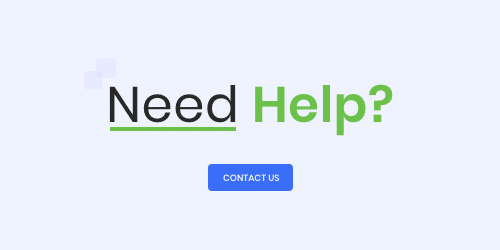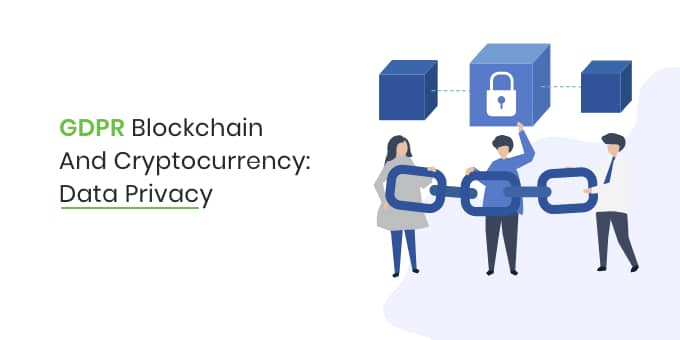In an era where data privacy concerns are at the forefront of the digital landscape, regulations like the GDPR play a pivotal role in protecting individuals’ personal information. This legislation, implemented in the EU in May 2018, has far-reaching consequences for businesses and organisations across various sectors. Among these, the fast-evolving fields of blockchain technology and cryptocurrency face unique challenges regarding GDPR compliance.
The global blockchain market is expected to grow from $7.18 billion in 2022 to $163.83 billion by 2029.
Blockchain’s decentralised, immutable nature, which ensures the security and transparency of transactions, seems to be at odds with GDPR’s core principles, such as the right to erasure and data minimisation.
A 2020 study found that over 42% of blockchain projects fail to implement adequate pseudonymisation techniques, exposing them to GDPR violations, especially concerning user privacy.
This blog explores how GDPR affects blockchain and cryptocurrency, the challenges these technologies pose, and potential solutions for achieving compliance while maintaining the benefits of decentralised systems.
Blockchain and cryptocurrency
The fundamental logic behind blockchain is its security and encryption that makes data unreadable to others without the decrypt key, which will return the encrypted data to its original context. Transactions once written to the blockchain are unchangeable, they cannot be deleted, as this would corrupt the blockchain.
Data Subject Access Requests (DSAR) is one of the data subject rights conferred under the General Data Protection Regulation (GDPR). Data Subject Access Requests (DSAR) is one of the data subject rights conferred under the General Data Protection Regulation (GDPR).
The blockchain provides total transparency to all blockchains and cryptocurrency transactions recorded to the public blockchain by enabling anybody to examine the whole audit trail of cryptocurrency transactions, for instance. Transparency on private blockchains is different, as access becomes limited to those with access to the private key.
Common Misconceptions
These are some typical misunderstandings concerning blockchain.
Around 80% of blockchain users believe that their transactions are completely anonymous, when in reality, most are pseudonymous, meaning identities can be traced back with enough data.
- Many people mistakenly believe that blockchain transactions are completely private.
- Identities in cryptocurrency transactions are often pseudonymous, not fully anonymous.
- Transactions themselves are publicly visible on the blockchain.
- Transparency is vital for the security and trustworthiness of the blockchain system.
- This openness raises significant privacy and data protection concerns.
- The issue becomes particularly important in the context of GDPR compliance.
Blockchain and persistent storage
Create-retrieve-append-burn is the methodology of storage on the blockchain. Once a transaction is in to the blockchain, it cannot delete or cancel, the blockchain can only append to, and existing data remains unaltered.
Therefore, in the manner that cryptocurrency such as Bitcoin or Etherium transfers, the action cannot change once the transaction has committed to the blockchain. This does imply cryptocurrencies if stolen or illegally transferred, as it is not possible to undo these actions.

GDPR implications
The regulations and rules of the GDPR is document with one of the fundamental values being the right to have your personal information erased. Organisations should perform a GDPR audit on a regular basis to identify the key risks and determine how to mitigate these risks. Another key element of the GDPR is the regulations behind how your data can transfer outside the EU.
With websites, for example, this can be easier to manage, but with blockchain and cryptocurrency, this becomes more complex as there is no control over where the nodes of the blockchain host. These nodes could be located anywhere worldwide!
When the GDPR regulations formalize, blockchain was in its infancy as it is likely this was not fully consider by the decision-makers. The GDPR regulations presume it was always possible for data privacy to maintain by deleting unwanted data. With the data written to the blockchain, this is most certainly not the case.
How do you ensure that blockchain and cryptocurrency are GDPR compliant?
GDPR effects on what can store on the Blockchain. In line with the GDPR Regulations, personal data should not write to the Blockchain, as the data cannot amend or erase once written. Organisations need to put in place GDPR compliant policies and procedures to ensure that they are compliant and could use policy generators to do so.
A possible solution for blockchain and cryptocurrency transactions is that the personal data not store on the blockchain, but personal data stores externally to the blockchain but links by a reference generate on the blockchain.
How this GDPR, blockchain, cryptocurrency workaround works is below:
- A company has its software systems which store transactional data on the blockchain.
- The company must ensure they are GDPR compliant. So personal information relates to cryptocurrency transactions must store outside of the blockchain but implement a high level of security.
- The software system sends a request for the personal data; the request is verified and checked to ensure it has the permission to view the data. If the request is valid, a link returns that will send the software a key to access the data that stores offline.
- With the link to the personal data, the software can update the personal information or erase the personal data if requested, ensuring GDPR compliance.
- With regard to the blockchain and cryptocurrency transactions, the system can verify that the data has not corrupt or tamper with by comparing the hash value of the retrieved data and the hash value provided by the blockchain. If the two hash values match, this is the confirmation that the data privacy is valid and has not tamper with.
Are these workarounds beneficial?
These approached cannot be as efficient as writing and obtaining personal information directly from the blockchain. These options are only considered in order to comply with the GDPR regulations.
What are the benefits?
- These workarounds can ensure that the method is completely GDPR compliant.
- It becomes possible to remove data in line with the GDPR Regulations, creating the necessary flexibility in the blockchain and for cryptocurrency transactions.
What are the downsides?
- Transparency of data, is a key to the blockchain, reduce. Once data store offline, it is no longer easy to identify who has access to the data.
- The ownership of data stored on the blockchain is no longer clear. Once data store outside of the blockchain, the ownership of the data is no longer there.
- It is still necessary to have P2P integration.
- For each new company added to the system, it is necessary to add a new P2P connection.
- The blockchain functions differently to its designed usage. The blockchain becomes a lookup table to reference other data, instead of the infrastructure for storing transactions such as cryptocurrency.
- With data spread across different entities, there are higher risks of security breaches or personal data to compromise, especially. When considering high-value transactions exists with cryptocurrency.
- The process becomes more complicated. The more complex processes become, increase the risk of errors and systems that are more risk to security issues.

The goal of GDPR (Cryptocurrency and blockchain)
The GDPR’s main goal is to return the ownership of personal data to the individuals. One of the critical elements of the GDPR is the right to have your personal data erased. The blockchain relies on the encryption keys, by no longer having access to the encryption keys, this makes the data inaccessible. But this is still not sufficient to data erasure. As the personal data will always store on the blockchain.
Challenges in Blockchain and Cryptocurrency
Immutability vs. Right to Erasure
The biggest obstacle is perhaps the basic conflict between the irreversible ledger of blockchain technology and the right to be forgotten under GDPR. While blockchain is built on the idea of preserving data permanently, GDPR demands the flexibility to delete data upon request.
Decentralisation and Accountability
Blockchain’s decentralised nature, where multiple nodes manage data, raises questions about who is responsible for ensuring GDPR compliance. Traditional databases have a clear data controller, but on a blockchain, there is no central authority to manage data or respond to DSARs.
Cross-Border Data Flow
With blockchain nodes distributed across the globe, ensuring compliance with GDPR’s data transfer rules becomes more difficult. Blockchain does not allow organisations to control where their data is processed, which could lead to violations of GDPR regulations regarding data transfers outside the EU.
Transparency vs. Privacy
Blockchain’s transparency allows all participants to view transactions, which could potentially expose personal data. Although pseudonymous, this data can sometimes be linked to real-world identities, posing privacy risks.
Future of GDPR and Blockchain
- Regulations like GDPR will need to change as blockchain technology develops to accommodate decentralised data structures.
- Policymakers may need to refine certain GDPR provisions to better fit blockchain’s unique characteristics.
- Blockchain developers are innovating to create solutions that allow compliance without compromising blockchain’s core benefits, such as transparency and security.
- The future will depend on striking a balance between privacy protection and technological innovation.
52% of companies using blockchain are now focusing on GDPR compliance, highlighting the need for adaptive legal frameworks.
Conclusion
With the blockchain, technologies continue to evolve and cryptocurrency becomes a feature of everyday life. GDPR gives us the opportunity to improve an individual’s ownership of their personal data. Try to maintain trust with third parties that may hold their data. To ensure GDPR compliance. There is no simple way to store personal information on the blockchain and retain GDPR compliant. With the need to be able to delete or update personal information. As things stand, this will limit how the blockchain technology can fully utilize. Meaning that more dated technology must continue to use to store the personal data that cannot store on the blockchain.
This approach takes away so many of the apparent benefits of the blockchain, including:
- Firstly, How secure is the data store outside of the blockchain? Is this data encrypted?
- How easy is it to access the data outside of the blockchain? The blockchain offers the best platform for security and data storage
- Who owns the data when it is not store on the blockchain?
- Lastly, Is this data store in other locations? Who has access to this data? And has this data shared with others, in the EU or outside of the EU?
There are many areas to consider; maybe the GDPR will be amend in the future to incorporate blockchain and cryptocurrency

